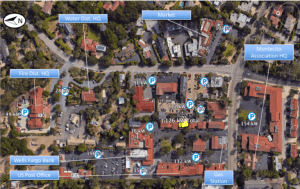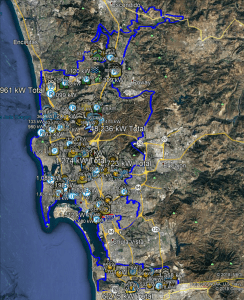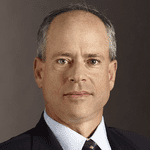
Clean Coalition success accelerates in 2018
A year-end review from the Executive Director.
Friends,
After ten years in existence, the Clean Coalition is accelerating the realization of its25 x 25 vision: From 2025 onward, at least 25% of newly added electricity generation capacity in the United States will be from local renewable energy sources.
Community Microgrids are the most effective approach to realizing this vision, and the Clean Coalition’sCommunity Microgridinitiatives in the San Francisco Bay Area, the Santa Barbara area, and San Diego illuminate the pathway. These initiatives showcase how local renewables and other distributed energy resources (DER), like energy storage, demand response, and load shedding, deliver an unparalleled trifecta of economic, environmental, and resilience benefits to communities.
Leveraging ourPeninsula Advanced Energy Community (PAEC) Initiative, the Clean Coalition is staging Community Microgrids in areas devastated by recent wildfires and landslides – bringing vital resilience to the impacted communities. Our North Bay Community Resilience Initiative is providing an example of how tobuild back rightafter disasters.
Read more about the North Bay Community Resilience Initiative
In the Goleta Load Pocket, a highly transmission-vulnerable region that spans 70 miles of coastline encompassing the cities of Goleta, Santa Barbara (including Montecito), and Carpinteria, we arestaging a Community Microgridthat will serve the community through future disasters and power outages.

This groundbreaking model for renewables-driven resilience will provide a blueprint that can be replicated in communities around the country.
Read more about indefinite renewables-driven resilience for the Goleta Load Pocket
To pave the way for Community Microgrids and to achieve our 25 x 25 vision, thewholesale distributed generation (WDG)market segment must be unleashed. WDG is distributed generation, including commercial-scale solar, that interconnects to the distribution grid and serves local loads while avoiding any use of the transmission grid. The Clean Coalition uses a combination of two powerful tools to unleash the WDG market segment:Solar Siting Surveysand innovativeFeed-In Tariff (FIT) designs.
Great examples of these tools have been developed in partnership with the City of San Diego as part of theSan Diego Solar Energy Innovation Network (SD SEIN) Initiative, which has the primary goal of sourcing 25% of the City’s total electricity consumption from local renewables by 2035. Local renewables are defined as being interconnected on the distribution grid within the City boundaries.

TheSan Diego Solar Siting Surveyuncovered about 500 megawatts of large commercial-scale solar potential on built environments within the City – enough to fulfill the average power needs of about 500,000 homes during peak solar production hours. It is estimated that including small commercial and residential sites would expand the solar siting potential to multiple gigawatts. The San Diego FIT, currently under review by the City, features a Market Responsive Pricing (MRP)mechanism to cost-effectively unleash WDG in San Diego and aDispatchability Adderto make renewable energy available whenever needed instead of only when the sun is shining or wind is blowing.
Read more about the SD SEIN Initiative
The Clean Coalition’s work on staging Community Microgrids and maximizing local renewables in these communities uncovers the legislative and regulatory hurdles impeding the progress of clean local energy and directly informs our policy initiatives.
Our policy leadership continued in 2018 withover 35 public filingsin regulatory proceedings. This year saw major Clean Coalition-driven progress in resolving a wide range of issues at the California Public Utilities Commission (CPUC) to remove key barriers to WDG.Among these was the much-anticipated update to the utility Interconnection Capacity Analysis (ICA) maps, also known asICA 2.0. This update almost suffered a significant setback when the major utilities withdrew access to their maps, citing confidentiality issues. Fortunately, intervention by the Clean Coalition and others resulted inrepublication of the maps, which are key tools for renewable energy project developers and property owners.

2018 also brought significant advances on ourTransmission Access Charges (TAC) Campaign. After five years of relentless Clean Coalition pressure on the California Independent System Operator (CAISO), CAISO finally recommended that the CPUC review how to develop a fair and consistent transmission cost allocation system that credits load-serving entities for their WDG procurement, rather than allowing a massive market distortion to persist in investor-owned utility service territories that steals up to 4.6 cents per kWh of value from local renewables. In parallel, the Clean Coalition has designed its thirdlegislative vehicleto direct CAISO and the CPUC to fix the TAC distortion and address other key reforms that will remove barriers to WDG.
Read more about our 2018 policy wins
Thank you for continuing to support the Clean Coalition and our pursuit of making clean local energy accessible now. We wish you a happy holiday season and look forward to an even more successful 2019.
Sincerely,
Craig Lewis
Founder and Executive Director

